2h 4h 4l: 4×4 Truck and SUV Modes Explained!
Navigating the drive modes on your 4×4 and puzzled by the terms 2H, 4H, and 4L? This guide breaks down these essential settings, ensuring you harness your vehicle’s full potential on any terrain. If you’re keen to master your 4×4’s capabilities, this is your starting point. Let’s get into it!
So, what do 2H, 4H, and 4L drive modes mean?
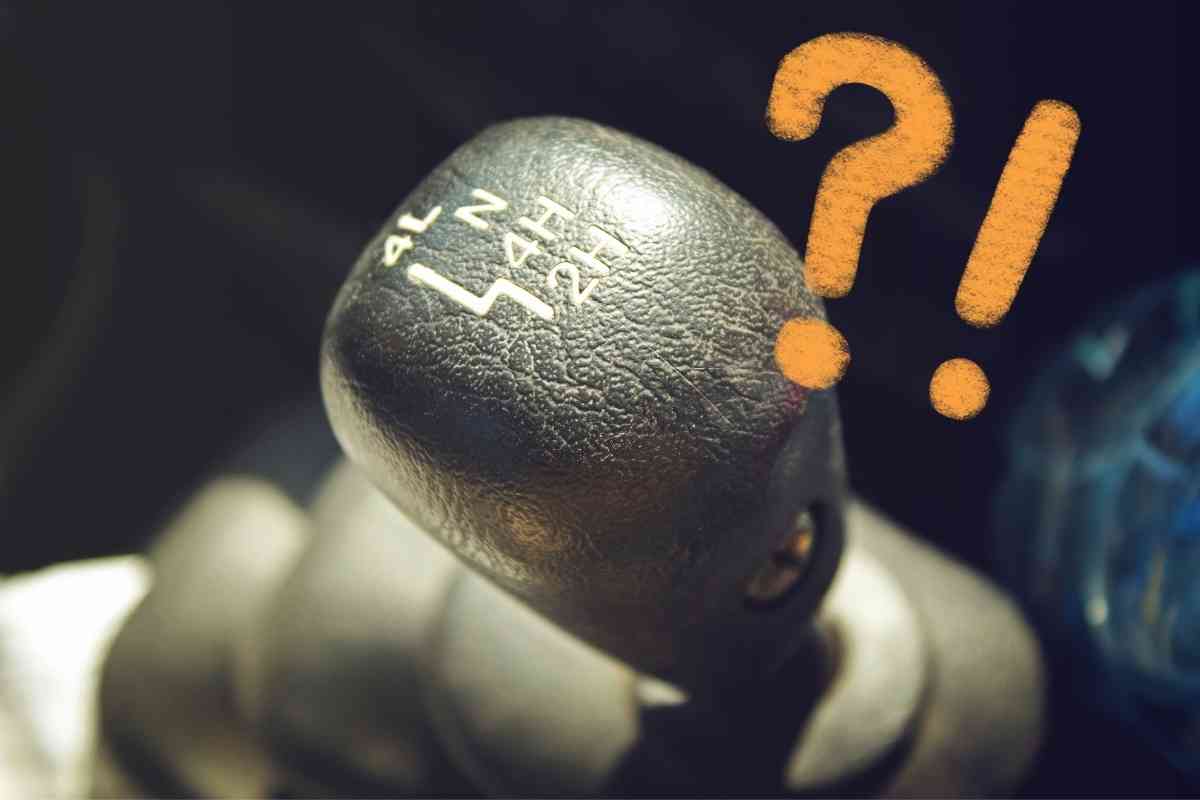
What Are 2H, 4H, and 4L on 4×4?
The terms 2H, 4H, and 4L denote driving modes for 4x4s. 2H is 2WD High Range for normal everyday driving; 4H is 4WD High Range for driving at normal speed but where traction is needed; and 4L is 4WD Low for driving when you need more torque but at a reduced speed.
These three driving modes are for trucks and SUVs. Some 4WD models run on two-wheel-drive (mostly rear-wheel drive) for normal driving, and you only switch to four-wheel drive when you need to drive off the road.
However, some vehicles have permanent all-wheel drive, but you can drive them on four-wheel-drive when on sealed surfaces.
Other SUVs and trucks offer on-demand 4WD.
On-demand 4WD operates in 2WD most of the time and only switches to 4WD when they detect a slip on their first axle.
Read on to learn more about the 4WD driving modes.
Suggestion: Bookmark our article explaining the difference between AWD and 4×4 to read next!
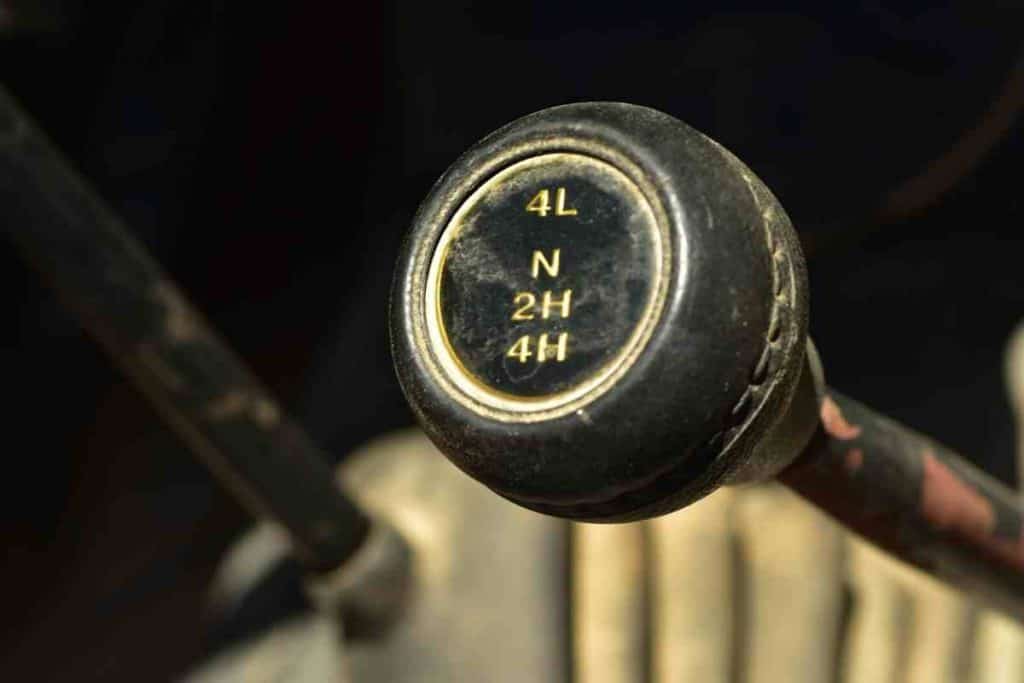
What Does 2H Mean in 4x4s?
Meaning 2WD High Range, 2H is the normal driving mode for your 4×4.
It is the driving mode you choose when driving on normal road conditions and when you need improved fuel efficiency from your truck or SUV.
In this mode, you will drive two wheels, mostly the rear wheels, but sometimes the front wheels as set by the automaker.
High-range means that the vehicle’s gear ratios apply to everyday driving.
Some 4X4s do not offer this option and are permanently on 4WD or AWD.
When in 2H mode, the vehicle will switch to a rear-wheel-drive more, but with a limited-slip or open differential.
Most vehicles have a set of controls to ensure that traction is sufficient to prevent slipping.
If you drive your 4×4 off a beaten path in this mode, it will keep slipping as the mode offers the least traction.
With an open differential, the wheel that goes off the ground will receive the highest amount of torque.
As such, your vehicle might keep slipping.
If the vehicle offers traction control, it will kick in when the wheel is off the ground, and this might be sufficient to keep the vehicle going.
Without traction control, the wheel that goes off the ground will keep spinning and your vehicle will not move.
To solve this problem, you might need a rear differential lock.
What is 4H in 4X4s?
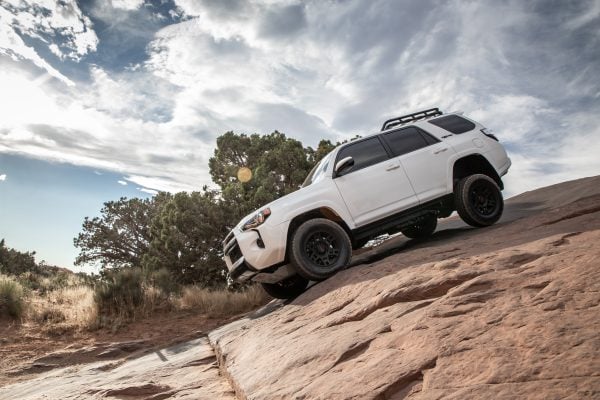
4WD High Range is the driving mode you need for driving at normal speeds on roads where high traction is needed.
In this mode, all the wheels rotate so that the wheels that are on the ground can offer the needed traction to move the vehicle off the road.
When driving on a muddy road, sand, or ice or snow, the 4H mode will engage all wheels to get the 4WD unstuck.
The mode activates the rear and front wheels in high range to get your truck or SUV unstuck.
You can use this mode for speeds up to 62 miles per hour.
To activate the mode, your vehicle needs to be in gear.
Push the button or turn it and you will engage the front axles to send torque to the front wheels beside the rear wheels.
Once you engage 4H, your engine will split power 50/50 between the rear and front axles.
The mode doesn’t cause cross-axle locking unless you manually activate this.
You may still have challenges with traction if you have one rear and one front wheel off the ground.
Vehicle traction control can help distribute torque across the wheels to ensure your car is unstuck.
In some cases, even traction control may not be enough to get a vehicle unstuck.
4H is, in some cases, used with a rear lock differential to provide additional traction.
When the rear lock differential is engaged, the power that goes to the rear wheels is split 50/50.
This means that each rear wheel gets 25 percent of your vehicle’s engine power while the remaining 50 percent goes to the front wheels.
In 4H, the vehicle continues with the same transmission as in the 2WD mode.
What Does 4L Mean in 4x4s?
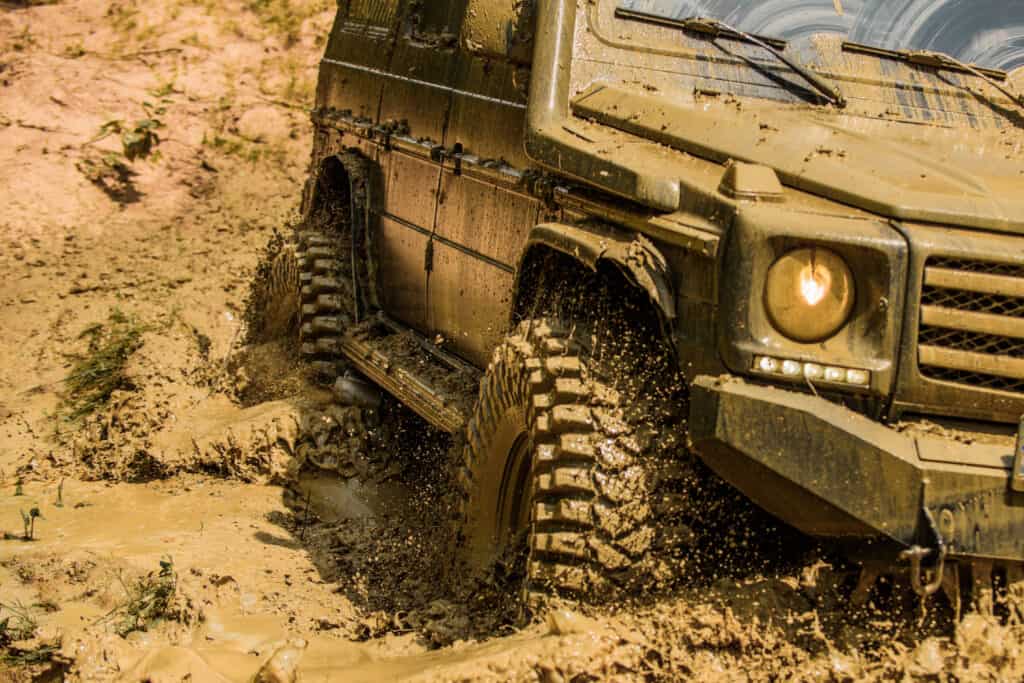
If you need less torque when driving at low speeds, 4WD Low Range can be a good driving mode.
The range provides maximum torque and power, but only when you are driving at low speeds.
You can use it when you are driving down or up a hill, through deep mud, rocky surfaces, or when your vehicle is towing or hauling heavy cargo.
In this mode, the four wheels turn slowly per revolution than they would in high-range driving.
The mode multiplies the torque by three so that your vehicle has more power.
Instead of the standard transmission, the transfer case offers tight gear ratios to adjust the wheel speed relative to the engine speeds.
Your vehicle is able to use a tighter rev band to keep speeds low through engine braking.
When you drive at 4H mode, there will not be sudden surges in power.
You can make safe long and steep hill descents without using mechanical brakes.
This condition will also help when going up a hill as there will not be sudden surge in torque.
To engage 4L, the transfer case needs to be in the neutral position.
You will hear a clunk when the vehicle switches within the transfer case.
The mode also disengages stability control, ABS, and traction control so that you can have the stability that you need to drive up and down a hill.
What is Hill Descent Control, HDC?
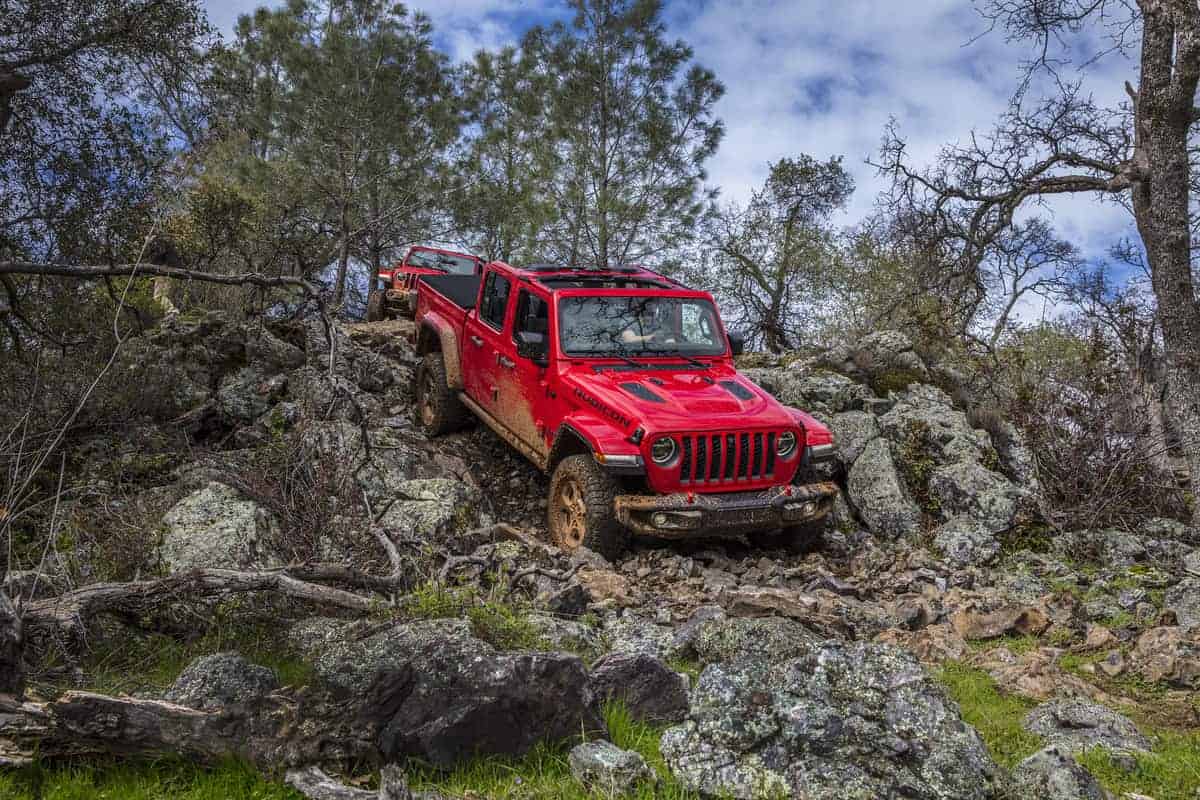
Hill Descent Control is available in almost all newer 4X4s.
It is a feature integrated into 4x4s to make driving off-road easier.
The system emulates low-range mode and uses sensors from the ABS system and traction control that keep the car’s speed within manageable limits when a car drives down the hill.
The mode pulses the brakes on the wheels to ensure that the speed of the vehicle stays within manageable limits.
Most systems allow you to customize the speed.
While the 4WD driving modes are good, you may not need some of them on smooth roads.
An open differential reduces traction when one wheel is off the ground when you drive off the road.
However, you need this open differential when driving on the pavement or highways.
The open differential ensures that the wheels will turn with ease.
When a vehicle’s wheels turn on smooth roads, the wheels turn at a different rate.
How much a wheel turns is dependent on the size of the arc and the size of the arc is dependent on the steering input.
If the rear differential is locked, the inside and outside wheels turn at the same rate.
The car then attempts to rotate wheels on a surface where it fails to overcome friction.
This will stress the driveline as the vehicle continues trying to rotate the wheels on the spot.
When your car is in four-wheel-drive mode, the rear and front axles are supposed to rotate at the same speed because torque splits 50/50.
The vehicle will have a traction challenge, which is why 2H is ideal for everyday driving, especially on the road.
You should only engage 4H or 4L when you are off the road when there is a degree of slip.
How Does Rear Lock Differential Help?

You can use rear lock differential mode with either 2WD or 4WD modes.
Rear lock differential is a system that splits torque 50/50 between the rear wheels.
When engaged, RLD ensures that the two wheels rotate at the same speed.
You can engage this mode when one wheel is on the ground and the other is spinning in the air.
The grounded wheel will have traction, and you will get your vehicle unstuck and be able to move.
Note that, you cannot engage the rear lock differential if your car is already stuck. The vehicle has to move for the mode to engage.
As such, you must engage it before getting into rough terrain.
Learn More in our article explaining
the difference between Diff Lock and 4×4 settings.
Share Your Insights With US
Did we forget something, get something right (or wrong)? We’d love to hear your insights! Share your automotive experiences based on our article in the comments below. Your input enriches our community’s knowledge. Thanks in advance for sharing!
Closing Thoughts
One of the other modes you will see on 4WDs is Neutral mode.
Here, the center differential is free from the transmission.
You can set the vehicle on neutral mode when you need to shift to other driving modes.
Knowing when to engage the driving modes is more important than knowing how to engage them.
If you are stuck before you engage the rear lock differential, there will be no way you can engage it, and you might need to be towed off the rugged terrain.
Again, if you engage the wrong driving mode, you will have a problem with the traction of torque surges in different driving conditions.
Off-road driving is fun, but first, understand the different driving modes.
Once you do that, go on to understand off-road tires and tire pressures among other factors that make a 4WD better for off-road driving.
Recommended Reading
- Driving In 4 Wheel Drive [15 Must-Knows Tips]
- Do I Use 4H or 4L to Drive in Snow? (ANSWERED!)
- How Do I Know if My 4 Wheel Drive is Working?
- Answers To Common 4 Wheel Drive Questions (FAQ)
- Can You Switch To 4WD While Driving?
- Is Full-Time 4WD the Same as AWD?
- Can I Turn Off 4×4 While Driving?
- Should You Use Four-Wheel Drive When Towing?
- Should I Drive In 4WD On Ice?
- What Are 2H, 4H, And 4L on 4×4?
- Should I drive in 4WD AUTO or 2WD?
- How Fast Can You Drive In 4×4 High?
Frequently Asked Questions
When should you use 4H and 4L?
4H is used for driving at normal speed but where traction is needed, such as on slippery or loose surfaces. 4L is used for driving when you need more torque but at a reduced speed, such as when climbing steep hills or driving on rough terrain.
What is 2H 4H and 4L used for?
2H is 2WD High Range for normal everyday driving. 4H is 4WD High Range for driving at normal speed but where traction is needed. 4L is 4WD Low for driving when you need more torque but at a reduced speed.
Should I drive in 2H or 4H?
You should drive in 2H for routine, everyday trips throughout the city on dry pavement. Switch to the 4H position when venturing off-road or when driving on slippery or loose surfaces.
What Does 4L Mean in a truck?
4L means 4WD Low Range, which is used for driving when you need more torque but at a reduced speed, such as when climbing steep hills or driving on rough terrain.
4H or 4L for sand?
For sand, it is recommended to use 4H. This will provide enough traction to drive on the sand without getting stuck.
4H or 4L for ice?
For ice, it is recommended to use 4L. This will provide more torque and better control when driving on slippery surfaces.
